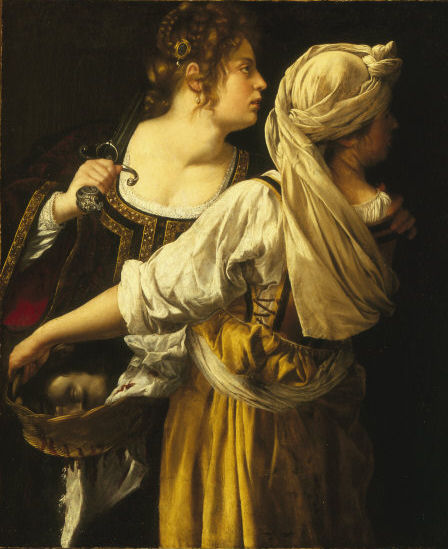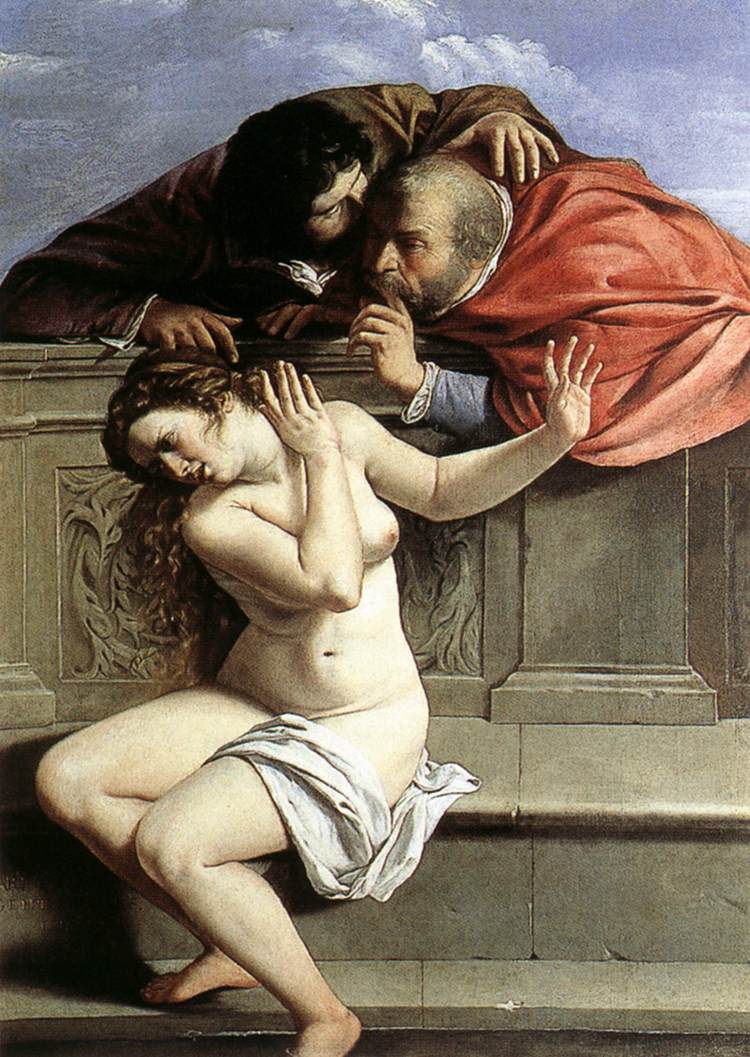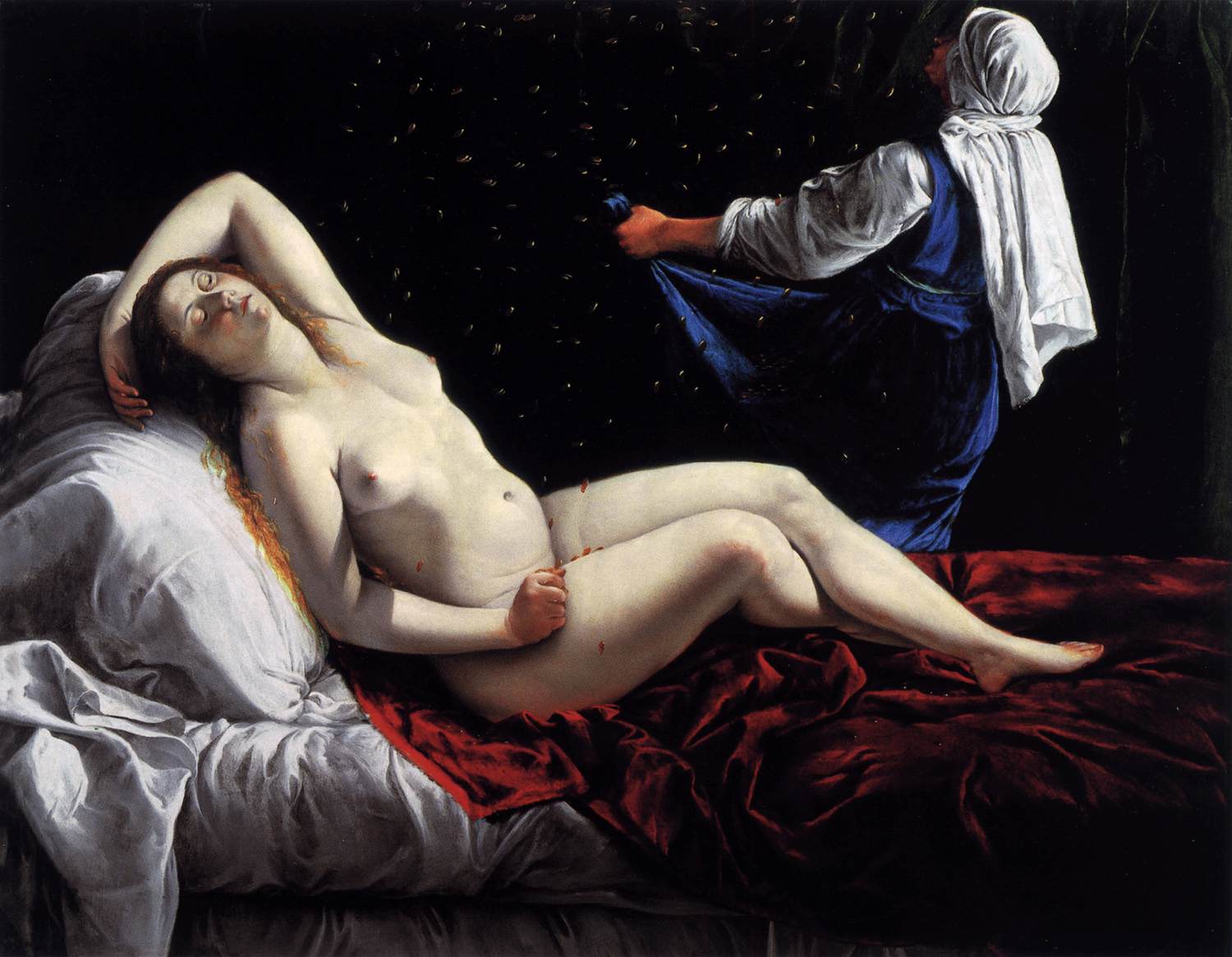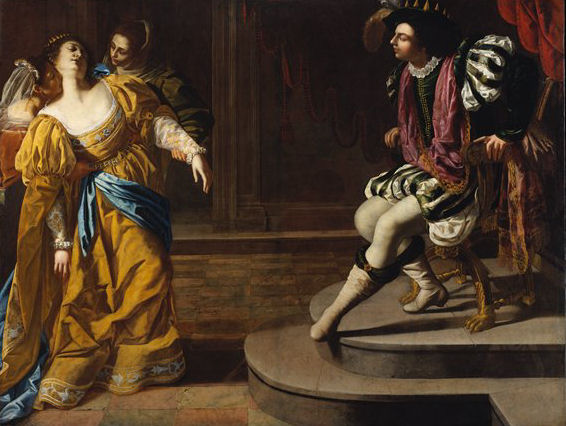Artemesia Gentileschi was born on this day in 1593 in Rome. Unlike most early modern women who were unable to pursue artistic careers for lack of access to training and patrons, Artemesia was the daughter of painter Orazio Gentileschi, who taught her his craft. Artemesia was one of the first Italian women to earn praise from contemporaries for her artistic achievements and the first to join the esteemed Accademia del Disegno in 1616. She received commissions from important European leaders and ran a successful workshop in Naples for over two decades. She worked in her native Rome as well as Florence, Venice, Naples, and London. One reason for her success may be her refusal to limit herself to portraits, still-lifes, and small devotional paintings, subjects traditionally seen as appropriate for female artists. Instead, she tackled history paintings on a large scale and is especially known for her numerous variations on the story of Judith and Holofernes. She also became known for her female nudes. Like many artists of her day, Artemesia was drawn to the tenebrism of Caravaggio and adapted his dramatic lighting to great effect.
Some have seen a connection between her frequent return to the Judith story and her rape in 1611 by Agostino Tassi, a colleague of her father who abused his privilege of access to the Gentileschi home. Torn between concerns for his daughter and for his career, Orazio waited almost a full year before bringing charges against Tassi, who was found guilty but ignored his punishment of exile from Rome. Artemesia was married and moved to Florence soon thereafter. While these traumatic events may have influenced her portrayal of the subject, Judith’s story was quite popular in the early Baroque period. Artemesia’s graphic rendering of the Assyrian general’s decapitation is in keeping with early seventeenth-century art that emphasized the physical brutality of war and martyrdom.
Reference: Ann Sutherland Harris and Judith W. Mann. “Gentileschi.” Grove Art Online. Oxford Art Online. Oxford University Press, http://www.oxfordartonline.com/subscriber/article/grove/art/T031374pg2.
Judith Beheading Holofernes, 1611-12, oil on canvas, Naples, Museo Nazionale di Capodimonte
Judith Beheading Holofernes, oil on canvas, c. 1619–20, Florence, Galleria degli Uffizi; Photo credit: Scala/Art Resource, NY
Judith and her Maidservant, oil on canvas, c. 1611, Florence, Palazzo Pitti; photo credit: Alinari/Art Resource, NY
Susanna and the Elders, 1610, oil on canvas, Pommersfelden, Schloss Weissenstein
Danaë, oil on copper, c.1612, St. Louis Art Museum, Museum Purchase and gift of various donors, no. 93:1986
Esther before Ahasuerus, oil on canvas, 1630s, New York, Metropolitan Museum of Art, Gift of Elinor Dorrance Ingersoll, 1969, Accession ID: 69.281; photo © The Metropolitan Museum of Art
Self-Portrait as the Allegory of Painting, 1630s, oil on canvas, Windsor, Royal Collection






